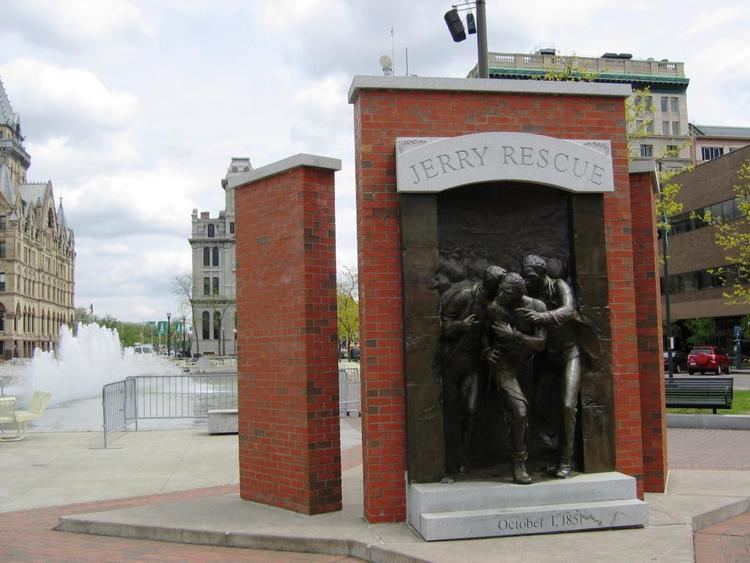 | ||
Jerry rescue
The Jerry Rescue occurred on October 1, 1851, and involved the public rescue of a fugitive slave who had been arrested the same day in Syracuse, New York, during the anti-slavery Liberty Party's state convention. The escaped slave was William Henry, a 40-year-old cooper from Missouri who called himself "Jerry."
Contents
- Jerry rescue
- Heroes of nullification the jerry rescue resisting slavery
- Background
- Arrest and rescue
- Trial
- Jerry Rescue building
- Underground Railroad homes in the state of New York
- References
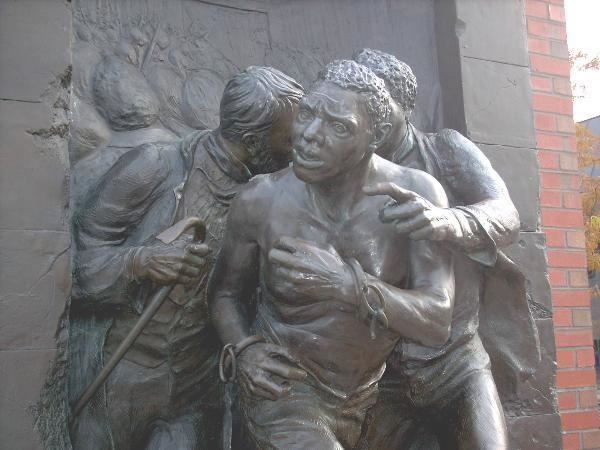
Heroes of nullification the jerry rescue resisting slavery
Background
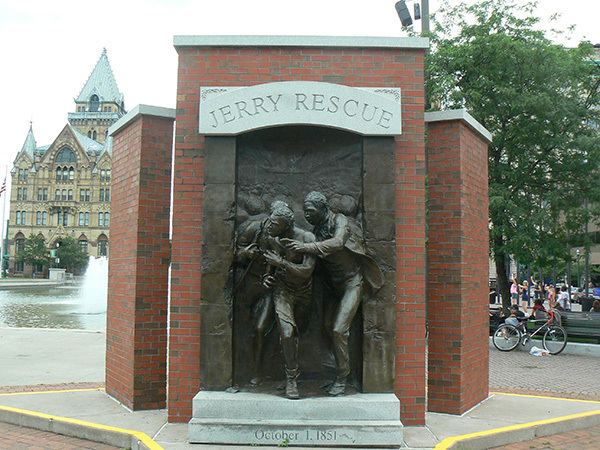
The fight against slavery in Central New York and the Finger Lakes region and the desire to help escaped slaves occurred because New York was a free state, and a number of well-positioned citizens, who were sympathetic to the slaves, lived in the area. Syracuse became an active center for the abolitionist movement due in large part to the influence of Gerrit Smith and a group allied with him, mostly associated with the Unitarian Church and their pastor, Reverend Samuel May in Syracuse, as well as Quakers in nearby Skaneateles, supported by abolitionists in many other religious congregations. Other prominent abolitionists from the area were Frederick Douglass, Millard Fillmore, Matilda Joslyn Gage, John W. Jones, William Marks and Harriet Tubman. Prior to the Civil War, due to the work of Loguen and others in defiance of federal law, Syracuse became known as the "great central depot on the Underground Railroad." Its central location meant that many slaves passed through the area "on their way to freedom" in Canada.
Arrest and rescue
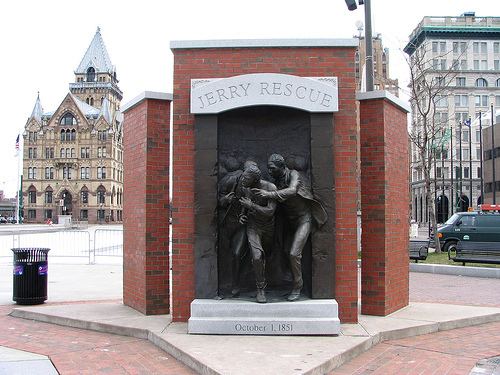
On October 1, 1851, William Henry was arrested in Syracuse under the Fugitive Slave Law. Earlier in 1851, Secretary of State Daniel Webster had warned that the law would be enforced even "here in Syracuse in the midst of the next Anti-Slavery Convention." The arrest was considered a message that the locally unpopular law would be seriously enforced by federal authorities.
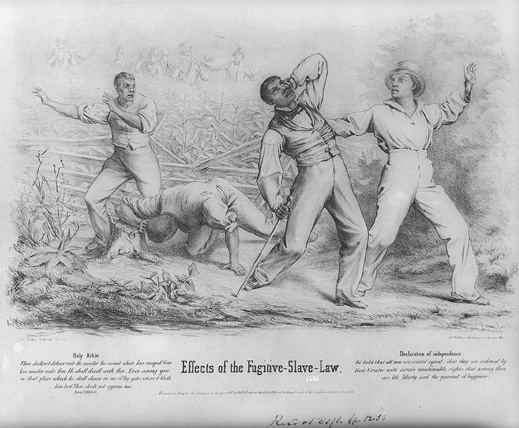
The anti-slavery Liberty Party was holding its state convention in the city, and when word of the arrest spread, several hundred abolitionists, including Charles Augustus Wheaton, broke into the city jail and freed him. The event came to be widely known as the Jerry Rescue. Henry was hidden in Syracuse for several days, then was taken first to the Orson Ames House in Mexico, New York, and then to Oswego, where he crossed Lake Ontario into Canada.
Congregationalist minister Samuel Ringgold Ward had to himself flee to Canada to escape persecution for his participation.
Trial
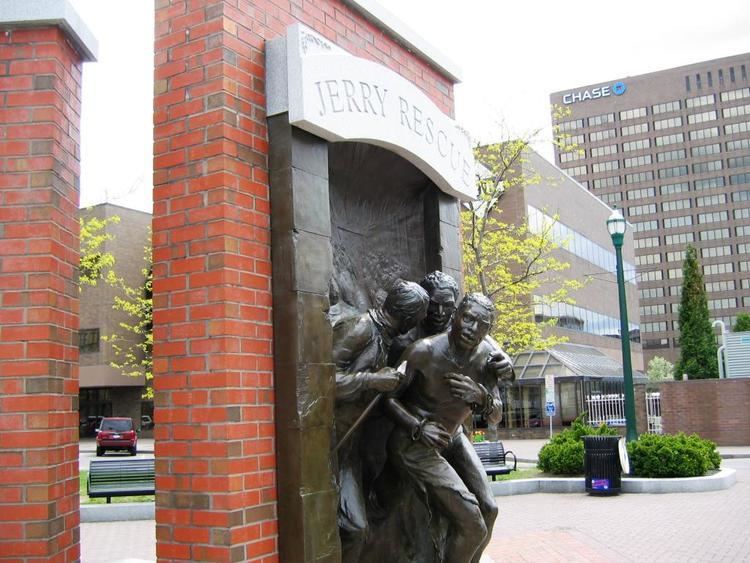
The trial took place that same day in the Townsend Building in Clinton Square, Syracuse, in the second floor office of the U.S. Commissioner Sabine, who tried the case. It was his first trial. Jerry had escaped during the afternoon session, and Sabine's office was wrecked.
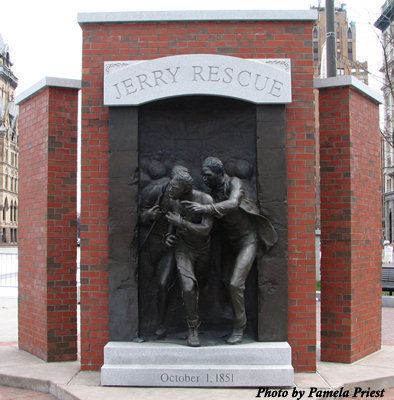
A total of 26 of the rescuers were tried for their actions, but only one, Enoch Reed, a black man, was convicted. The suspects were bailed out by a number of people, including U.S. Senator and former governor of New York William H. Seward. Nine others, including Reverend Jermain Wesley Loguen, himself a fugitive slave, were charged, but fled to Canada.
Jerry Rescue building
The event was commemorated in the 1850s with the renaming of the Townsend Block to the Jerry Rescue Building, which is no longer standing. The building, constructed in 1829, was located on the south side of Clinton Square, at the corner of Water and Clinton Streets. The event is now memorialized with a monument in Clinton Square, Syracuse.
Underground Railroad homes in the state of New York
Cayuga County:
Chemung County:
Onondaga County:
Seneca County:
Yates County:
